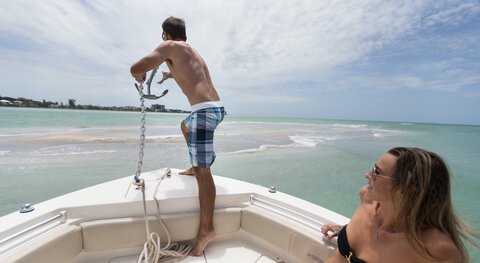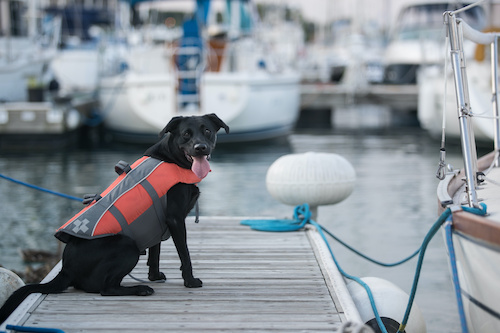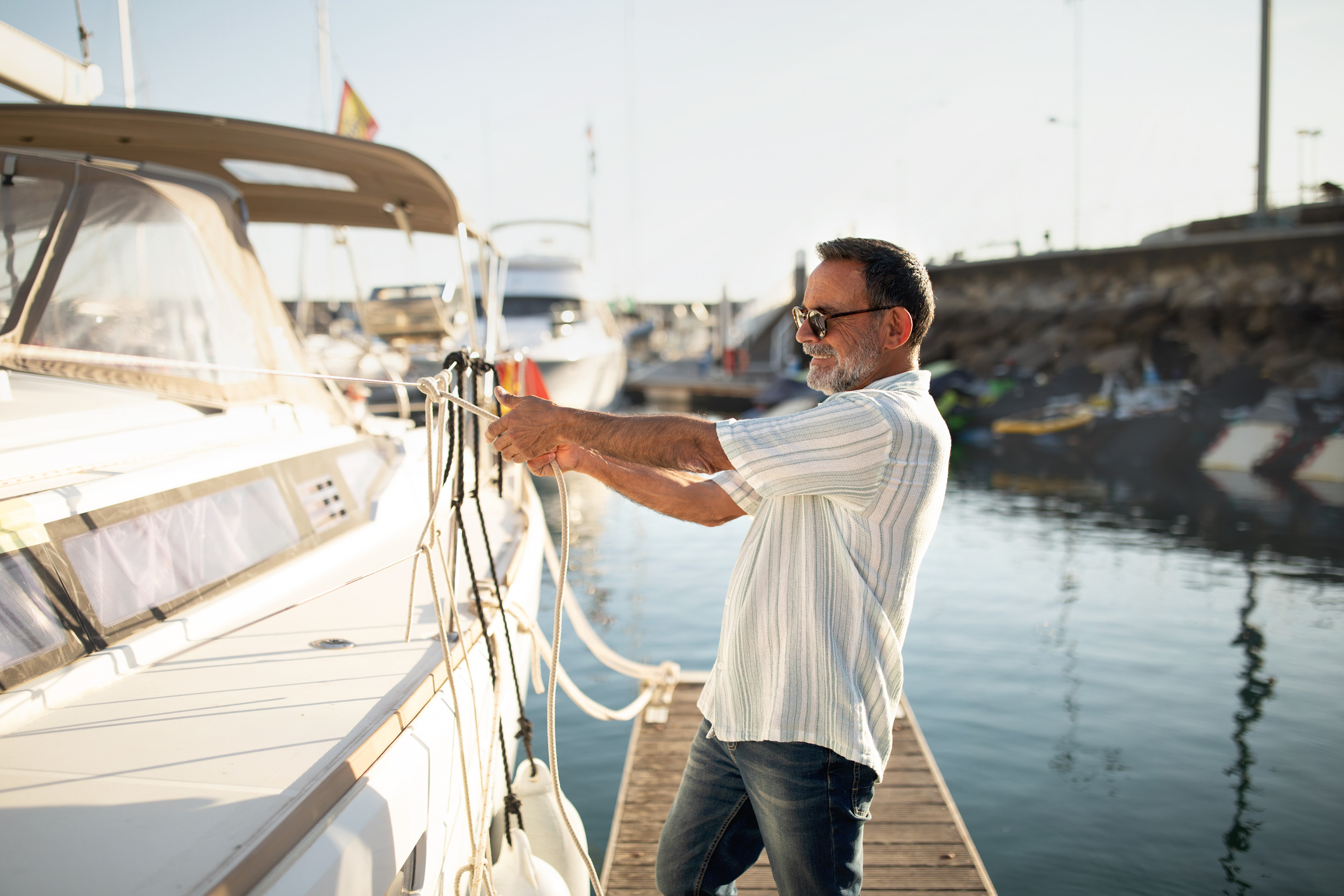Getting your anchor to hold should be easy—no guesswork, no drama. Whether you're just stopping for a quick dip or staying for the night, you want your setup to work every time.
So, what really makes the difference? The right anchoring accessories, simply put. Having the right gear means you're more likely to get it right on the first try. Here's a look at the essential boat accessories every skipper should have to make anchoring easier and safer.
Essential Anchoring Gear Checklist
1. The Right Boat Anchor
Your main anchor is the backbone of your anchoring system. Different anchors perform better on different bottoms—mud, sand, rock, or weeds—so choose one that matches where you boat. For most bays and coastal waters, a modern fluke or claw anchor offers reliable holding. Always size your anchor using the manufacturer's recommendations for your boat's size.
Read Next: How to Beach a Boat
2. Anchor Rode (Line and Chain)
The rode is the connection between your boat and the bottom. Essentially, it's a combination of chain and rope:
- Chain: Aim for at least 15 to 20 feet of chain. The extra weight keeps the anchor shank down so the flukes bite into the bottom as they should. It also provides critical abrasion resistance down near the anchor.
- Line: Nylon line stretches just enough to soften the ride, taking the edge off waves and wakes so your boat doesn't get jolted. This prevents sharp jolts that can rip the anchor free. The total length of your rode determines your scope—the ratio needed to set the anchor to the seabed securely.
3. Anchor Windlass
If your boat is over 30 feet (or you run heavy chain rodes), an anchor windlass is a necessity. It's an electric or hydraulic winch that does all the heavy lifting—hauling up the anchor and all that tensioned line. With a windlass, you won't strain your back or risk injury, and pulling up the anchor is much quicker.
4. Deck Cleats, Chocks, and Rollers
These accessories are responsible for securing the rode and protecting the boat's hull.
- Cleats: Your final anchor rode ties off here. They must be heavy-duty, well-mounted, and backed by solid plates to handle the massive shock loads they'll see.
- Bow Roller: This keeps the anchor and chain aligned so you don't scratch the hull or rail when dropping or pulling in the anchor.
- Snubbers: If you run a chain rode, a snubber (aka a nylon bridle) will make a huge difference. It takes the strain off the chain and transfers the load to a deck cleat, so the nylon can stretch and smooth out any jolts or rattles.
5. Depth and Scope Tools
Smart anchoring requires precise information. And you can't anchor safely without a good depth sounder. In addition, a chartplotter or GPS makes it easy to see where you are and spot right away if your anchor starts to drag.
6. Mooring Buoy and Retrieval Aids
While a mooring buoy is a pre-installed convenience, several small mooring accessories are vital when anchoring in open water:
- Marker Buoy/Anchor Ball: Use this to temporarily mark exactly where your anchor is set. It is helpful for both retrieval and keeping other boaters informed.
- Heavy-Duty Gloves: Non-negotiable for handling rough lines and gritty chains safely.
- Line/Chain Hook: A chain or line hook makes handling your gear easier—whether you're setting up a snubber or pulling the anchor out of the water.
Buying good anchoring gear isn't just about having more stuff—it's about trust. When the wind shifts or the current picks up, you want to know your setup will hold. If your anchor matches your boat and you have the proper chain, line, and extras, you'll be able to relax at every stop.
Anchoring & Mooring Accessories Q&A
Q: What anchoring accessories do I need for reliable holding?
A: The most important anchor accessories include the right anchor for your bottom type, a properly sized anchor rode (chain + nylon line), a bow roller, cleats, and a snubber or bridle.
Q: What should I look for when choosing anchor accessories for boats?
A: Focus on durability, corrosion-resistant materials, and compatibility with your anchor setup. Essential items include heavy-duty chain, a reliable windlass for larger boats, depth and GPS tools to set scope accurately, and gloves or chain hooks to handle gear safely.
Q: How do anchoring accessories improve safety?
A: Quality anchoring accessories reduce the risk of dragging, protect your hull and hardware, improve shock absorption, and make gear handling safer.
Originally published in March 2010. Updated in November 2025.


